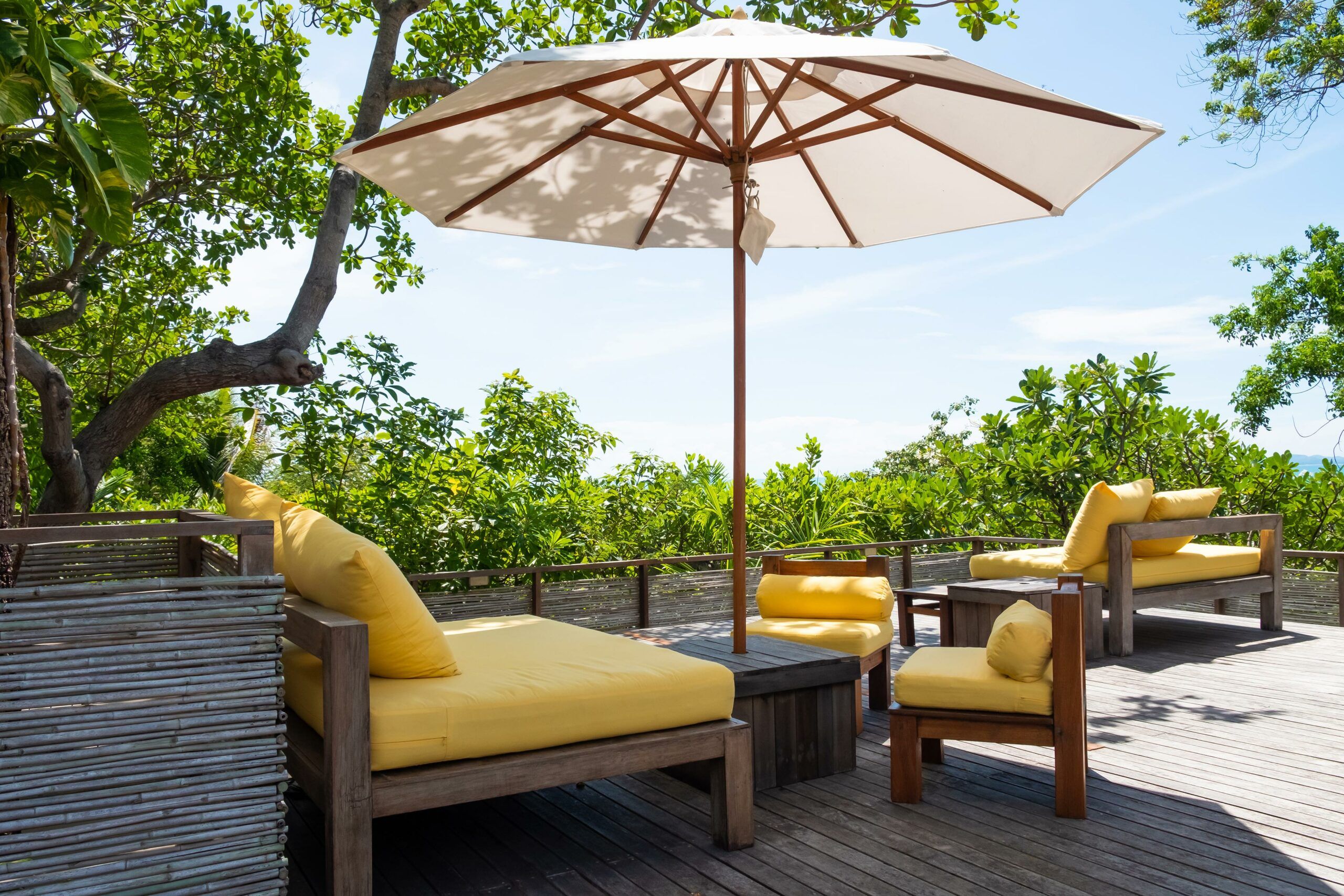Creating shade in your backyard doesn’t have to be complicated or expensive. From simple fabric canopies to elaborate pergolas and natural trees, there are numerous ways to protect yourself from the sun while enhancing your outdoor living space. Here are six innovative ideas to turn your backyard into a cool, inviting oasis.
How To Add Shade to Your Backyard
Before deciding which route to take, consider your backyard’s layout, your budget, and your design preferences. The following ideas offer a range of options to fit various needs and styles.
Install a Fabric Canopy
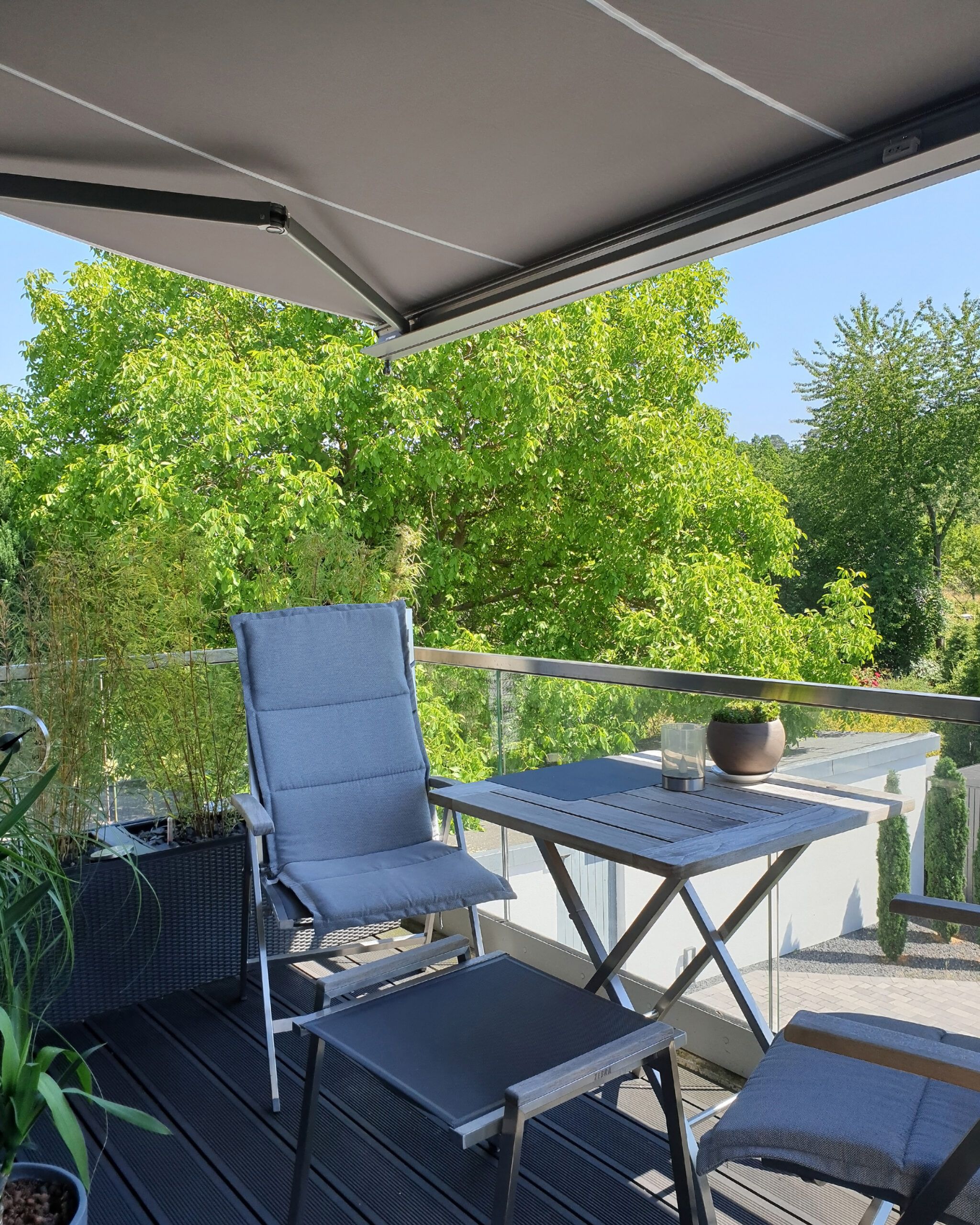
A fabric canopy is a versatile and attractive way to create shade on your deck or patio. These canopies are typically made from durable, weather-resistant materials that can withstand sun, rain, and wind. They have the following benefits:
- Available in various colors and patterns to match your outdoor decor
- Can be adjusted to provide shade at different angles throughout the day
- Easy to install and remove
- Often more affordable than permanent structures
When choosing a canopy, opt for fade-resistant materials to ensure the fabric looks great for many years. Anchor the canopy securely to your deck railings or support posts for stability. Additionally, consider incorporating LED lights or solar lanterns to create a cozy and inviting atmosphere during evening gatherings.
Drape a Tarp for Cover
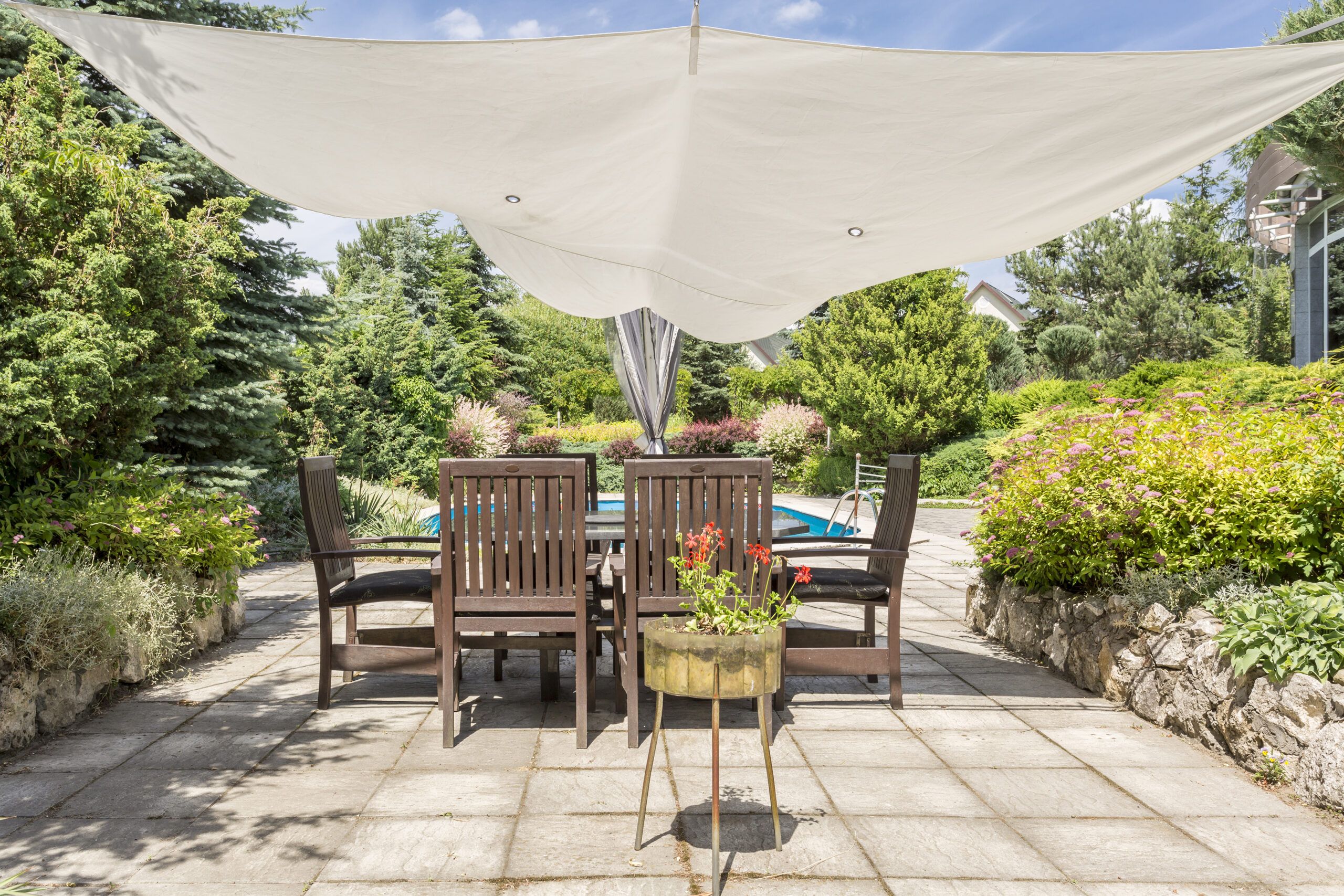
For a quick and budget-friendly option, consider draping a tarp over an existing structure such as a pergola or slatted ceiling. This method is particularly useful for temporary shade or as a stopgap measure while planning more permanent solutions. Here’s how to make the most of a tarp cover:
- Choose a moisture-resistant cotton-canvas tarp for durability.
- Secure the tarp tightly to prevent sagging or flapping in the wind.
- Consider using grommets or reinforced edges for easier installation.
- Opt for a light color to reflect heat and keep the area cooler.
Remember that while a tarp is an effective short-term solution, it may not be as aesthetically pleasing or long-lasting as other options. For added visual appeal, you could decorate the tarp with outdoor fabric paint or stencils, allowing it to blend seamlessly with your backyard decor.
See more creative ways to customize your deck.
Invest in an Outdoor Umbrella
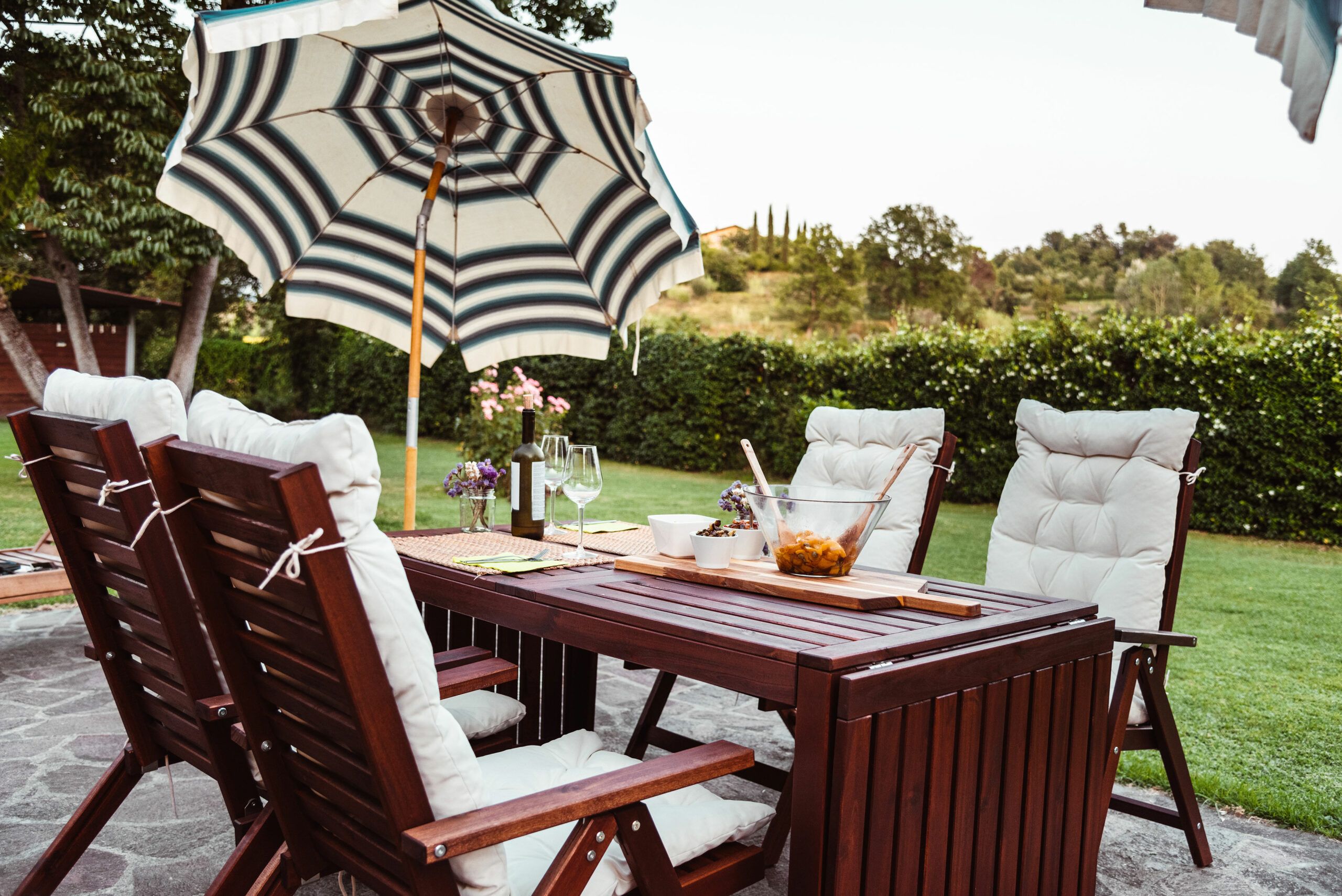
An outdoor umbrella is a classic and versatile shade option that can be easily moved and adjusted as needed. Modern patio umbrellas come in various sizes, styles, and materials to suit any outdoor space. Consider these factors when choosing an outdoor umbrella:
- Ensure the umbrella is large enough to shade your seating area.
- Look for UV-resistant fabrics that won’t fade quickly.
- Choose a sturdy base to keep the umbrella secure in windy conditions.
- Opt for a tilt function that allows you to adjust the umbrella’s angle throughout the day.
For added convenience, consider a cantilever umbrella that can be positioned off-center, providing shade without obstructing views or taking up space in the middle of your seating area. To complement the umbrella, integrate outdoor furniture that creates a cohesive and inviting space for relaxation and entertainment.
Increase Shade With a Pergola

A pergola is an elegant and functional addition to any backyard, offering a defined outdoor living space with adjustable shade. These structures can be customized to fit your specific needs and style preferences. Here are some ways to maximize shade with a pergola:
- Add weather-resistant curtains for adjustable privacy and shade.
- Incorporate a louvered roof system for precise light control.
- Install retractable shade canopies between the pergola beams.
- Plant climbing vines to create a natural, living canopy.
A pergola also adds architectural interest to your outdoor space, making it a focal point for entertaining and relaxation. If you want to personalize your pergola, try adding fairy lights or hanging planters to enhance its visual appeal while creating ambient light.
Screen out noisy neighbors with privacy screen upgrades.
Deck Out a Freestanding Structure
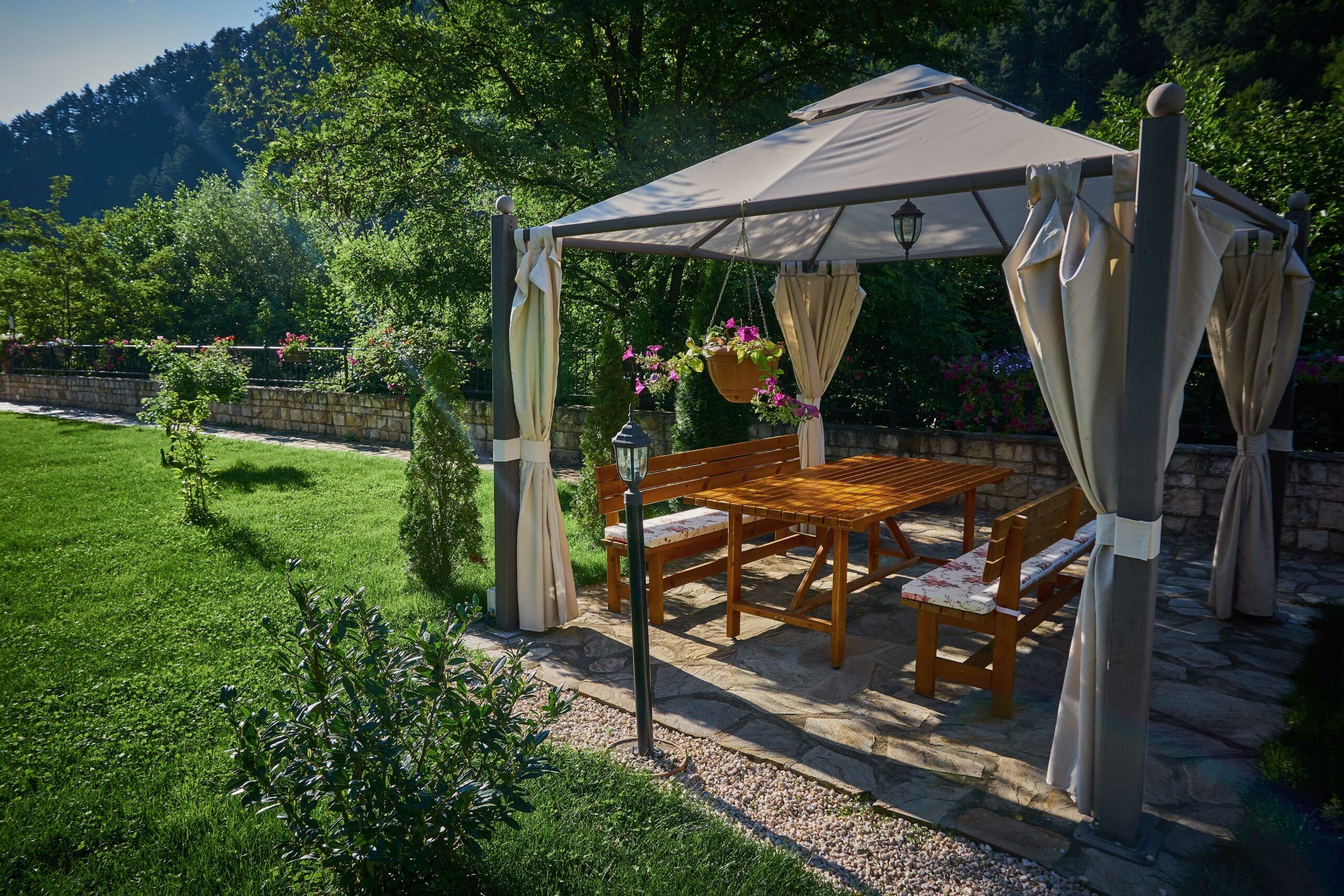
For those seeking a more secluded and versatile shade solution, consider building a freestanding structure in your backyard. This could be a gazebo, pavilion, or custom-designed shade house. These structures offer several advantages:
- Complete protection from sun and rain
- Increased property value
- Opportunity for creative design and personalization
- Potential for year-round use with proper weatherproofing
When designing your freestanding structure, consider incorporating salvaged materials for a unique, eco-friendly touch. Add comfortable seating, such as a daybed or lounge chairs, to create the perfect shady retreat for reading, napping, or entertaining. You may also want to include weatherproof storage for outdoor accessories and cushions to keep them protected when not in use.
Add Wisteria to a Pergola
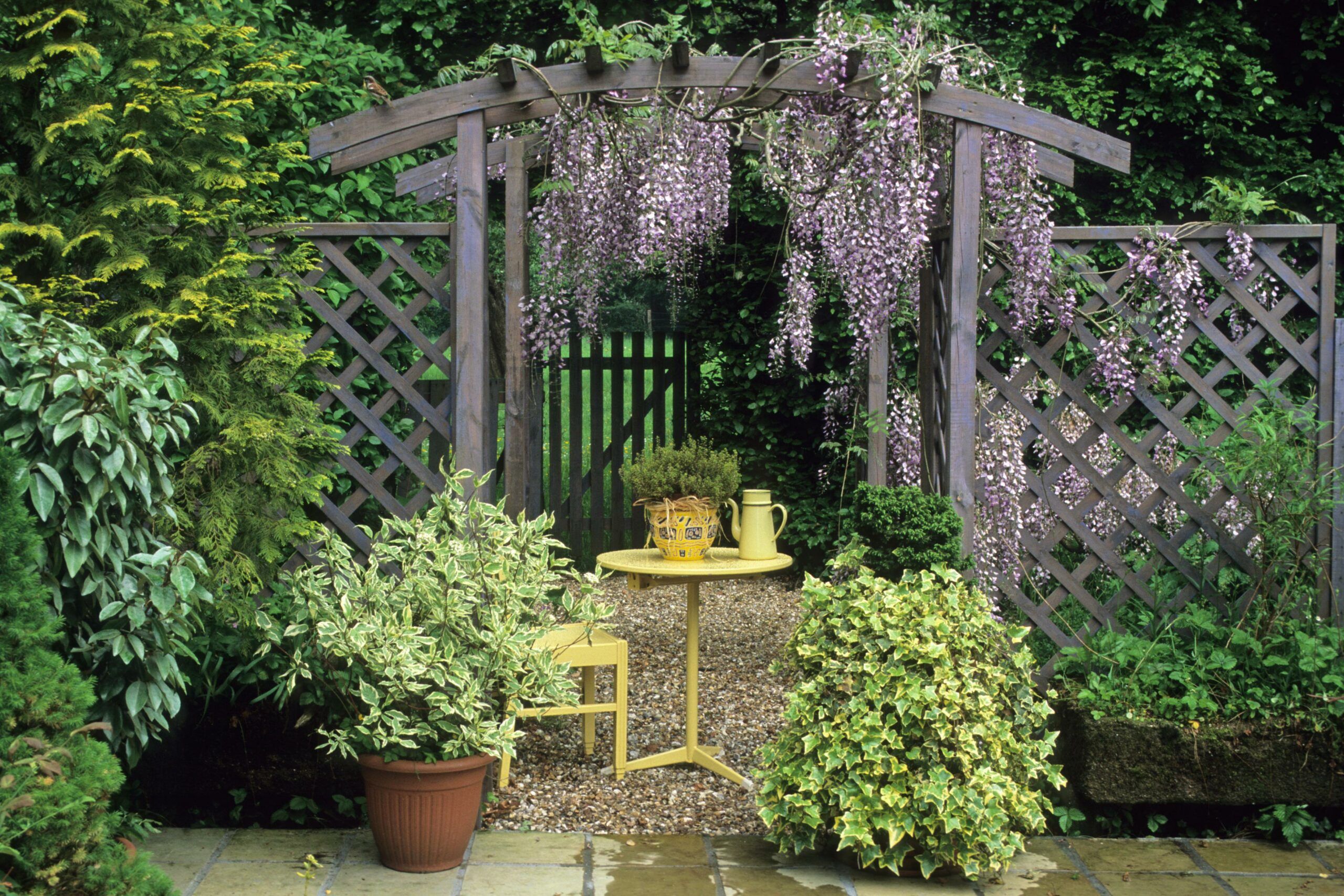
Combining natural beauty with functional shade, wisteria-covered pergolas create a magical, romantic atmosphere. This fast-growing vine can quickly transform a basic pergola into a lush, shaded oasis. Here’s what you need to know about using wisteria for shade:
- Choose a sturdy pergola structure to support the weight of mature vines.
- Be patient, as it may take a few years for the vines to fully establish and provide dense shade.
- Plant wisteria in well-draining soil with full sun exposure.
- Provide regular pruning and training to encourage healthy growth and prevent overgrowth.
While wisteria is beautiful, it can be invasive in some regions. Consider native alternatives if wisteria is not suitable for your area. For a more varied and vibrant look, you can mix wisteria with other climbing plants, such as clematis or jasmine.
Get more inspiration for incorporating climbers into your outdoor space from this picturesque rose garden.
Natural Shade Solutions
In addition to man-made structures, incorporating natural elements can provide effective and aesthetically pleasing shade in your backyard.
Plant Shade Trees
Strategically placed trees can offer long-term, sustainable shade for your outdoor space. Consider fast-growing varieties such as maple, oak, or elm for quicker results. When planting shade trees:
- Choose species that are well-suited to your climate and soil type.
- Consider deciduous trees that provide shade in summer but allow sunlight in winter.
- Plan for the tree’s mature size to ensure it won’t interfere with structures or utilities.
- Plant trees on the south or west side of your yard for maximum afternoon shade.
In addition to providing shade, trees can significantly enhance the overall aesthetic and ecological value of your yard. Ensure you provide adequate water and mulching to support healthy growth, especially during initial growing years.
Create a Living Wall
A living wall or vertical garden can provide both shade and privacy while adding a lush, green element to your backyard. Use trellises, wall-mounted planters, or freestanding structures to support climbing plants or hanging gardens. Some shade-providing plants for living walls include:
- Boston ivy
- Clematis
- Climbing hydrangea
- Jasmine
Living walls can offer shade, visual appeal, and even noise reduction. They also provide habitat for local wildlife, including pollinators like bees and butterflies, enhancing your garden’s biodiversity.
